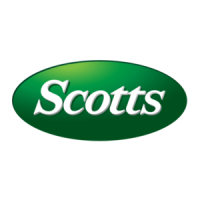Safety - 6
SAFETY
machine. Disengage all power and stop the engine. Lock
park brake and remove the key. Let machine cool.
• Disconnect battery or remove spark plug wire before
making any repairs.
• Before servicing the machine, carefully release pressure
from any components with stored energy, such as hydraulic
components.
• Keep all nuts and bolts tightened, especially blade
attachment bolts.
• Securely support any machine elements that must be
raised for service work.
• Never run engine unless park brake is locked.
• Keep all parts in good condition and properly installed.
Fix damage immediately. Replace worn or broken parts.
Replace all worn or damaged safety and instruction decals.
• To prevent fires, remove any buildup of grease, oil, or
debris from the machine, especially the engine
compartment.
• Charge batteries in an open, well-ventilated area, away
from sparks. Unplug battery charger before connecting or
disconnecting from the battery. Use insulated tools.
• Do not modify machine or safety devices. Unauthorized
modifications may impair its function and safety.
• Do not wear radio or music headphones while servicing
the machine. Safe service requires your full attention.
Prevent Fires
• Never remove fuel cap, or add fuel with engine running
or hot. Allow engine to cool for several minutes.
• Never store equipment with fuel in the tank inside a
building where fumes may reach an open flame or spark.
• Allow engine to cool before storing in any enclosure.
• To reduce fire hazard, keep engine free of grass, leaves,
or excessive grease.
Tire Safety
Handling Fuel Safely
Fuel and fuel vapors are highly flammable:
• Do not refuel machine while you smoke, when machine
is near an open flame or sparks, or when engine is running.
stop engine and allow to cool before filling.
• Never remove the fuel cap or add fuel with the engine
Explosive separation of a tire and rim parts can cause
serious injury or death:
• Do not attempt to mount a tire without the proper
equipment and experience to perform the job.
• Always maintain the correct tire pressure. Do not
inflate the tires above the recommended pressure. Never
weld or heat a wheel and tire assembly. The heat can
cause an increase in air pressure resulting in a tire
explosion. Welding can structurally weaken or deform the
wheel.
• When inflating tires, use a clip-on chuck and extension
hose long enough to allow you to stand to one side and
NOT in front of or over the tire assembly.
• Check tires for low pressure, cuts, bubbles, damaged
rims or missing lug bolts and nuts.

